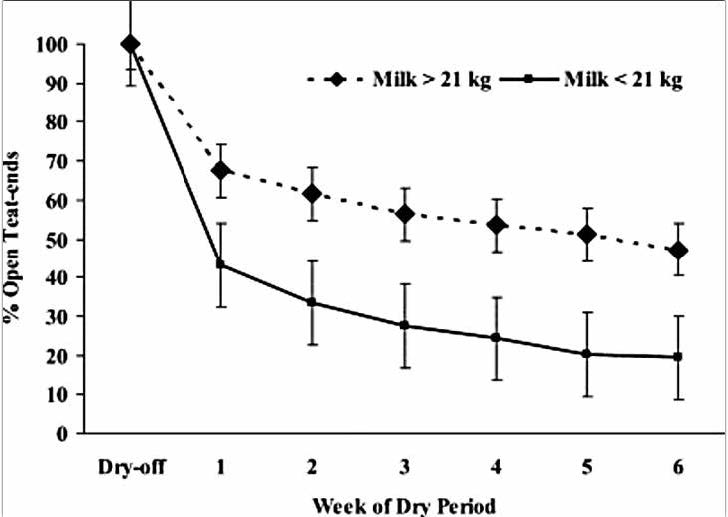80% of disease and animal losses in the dairy herd occur from 21 days pre-calving to 60 days post-calving. Here are 3 main check-points for drying off, to ensure a more successful transition:
- Body condition score 3.0
- Healthy claws
- Milk yield at dry off less than 10 litres
1. Body condition score
Body condition scoring cows at 100 days pre-dry off, and then at drying off, is the best way to see if changes need to be made to the nutrition of your cows. Cows with a condition score of over 3 at drying off are at risk of fatty liver syndrome which predisposes the animal to metabolic disorders post-calving. Common disorders are ketosis and milk fever which aren’t always displayed by clinical symptoms and are very costly to the farmer. In addition to this, over-conditioned animals have calves with higher birth weights which may require assistance at calving. Intervention increases the risk of infection that impacts the general health and well-being of the animal as well as affect reproduction.
Intervention checklist
- 90% of animals should calf with no intervention
- Just wait intervention always creates risk
- Check if no progress after 2 hours
- At intervention disinfectant, lubricant, time, space.
Care should also be taken to ensure maiden heifers aren’t over-conditioned at first calving as they are also suspectable to the same disorders and diseases as mature dairy cows. Research has shown that calving at 24 months substantially reduces the risk of excessive body condition at calving and associated metabolic disorders.
2. Healthy Claws
Ideally, farms should adopt a policy of routinely trimming animals’ feet at dry-off, as a preventative rather than a cure. Good mobility dramatically increases feed intakes of the freshly calved cow and allows foot problems to be diagnosed and treated before the next lactation. Higher dry matter intakes post-calving reduce the negative-energy-balance gap and mean higher milk yields with fewer metabolic disorders.
3. Milk yield at less than<10-20L at drying of
This graph clearly shows the risk of drying off cows with high milk yields.
In an ideal world the lowest possible milk yield before drying off should be aimed for with some herds achieving <10L, however, <20L would be a good place to start particularly with higher-yielding cows.
Drying off above this yield causes milk leakage on bedding and leads to environmental mastitis. In addition, these animals become more susceptible to mastitis at calving.
Transition cow feeding guidelines:
- Feeding space 85 cm per cow
- High fibre feed with no diet sorting
- Rumen fill score > 4













